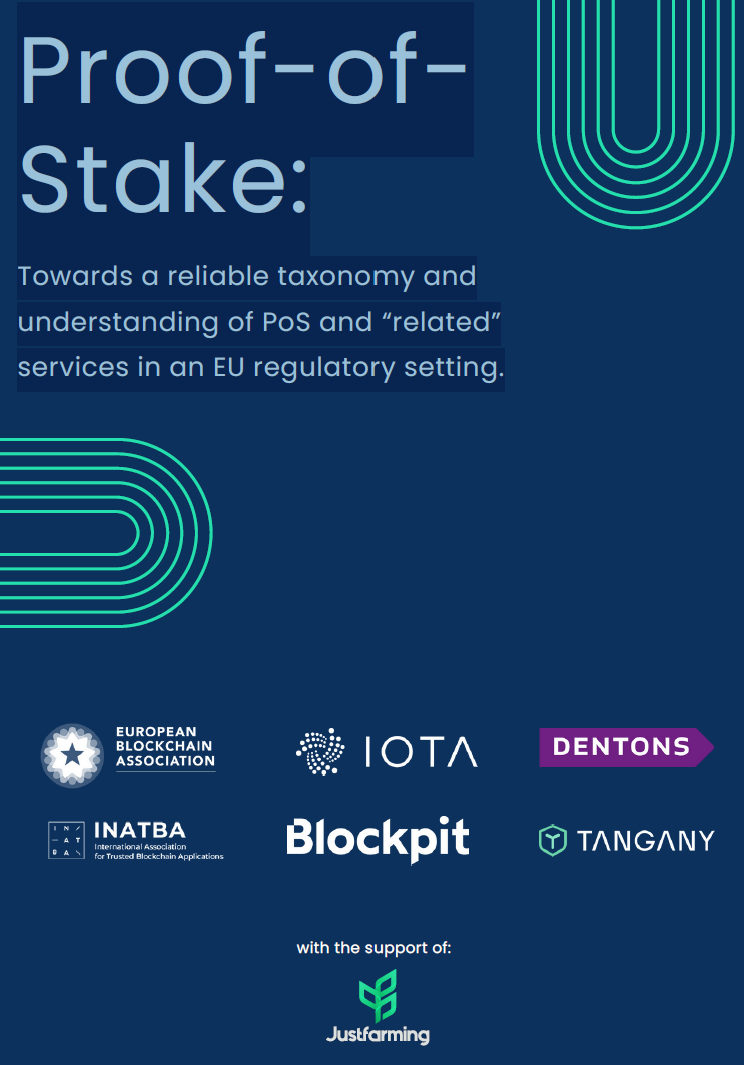The need for regulatory clarity and harmonisation in the blockchain space has never been more pressing. As blockchain technology continues to evolve, and its applications expand across sectors, the absence of clear regulatory guidelines is a major impediment to innovation and growth. A term that has recently gained particular significance in this context is that of “staking”. To date, there is no uniform consensus on how this process and its various manifestations are to be defined in concrete terms, which has led to legal uncertainty, sometimes with considerable consequences. Some of the leading stakeholders in the blockchain space have decided to jointly draft this position paper – with the aim of not only making a clear distinction between staking and lending depending on the actual underlying technical process, but also to differentiate between the different types of staking. We hope to be able to provide a valuable contribution and a basis for the upcoming discussions in this regard. A big thank you to our members and partners at IOTA, Dentons, INATBA, Blockpit, Tangany, and Justfarming for the collaboration, expert insights and support!
Why recent tax developments have highlighted the importance of a common legal understanding of “Staking”
The importance of finding consensus among European Union Member States was recently demonstrated, in particular, by the discussions around “DAC8” (Directive amending Directive 2011/16/EU on administrative cooperation in the field of taxation) which, prior to its adoption, referred to the term“ staking” as a “crypto-asset service”, thereby establishing it as one of the various requirements for compliance with the reporting obligations provided for therein. Although this approach was (fortunately) dropped last minute due to a lack of consensus on what should even be considered staking, these discussions have highlighted the need for swift clarification, most notably to ensure sufficient legal certainty and clarity in the European Union.

Download the paper here
One of the key aspects for the effectiveness of EU fiscal policy is sufficiently clear guidance on taxation. However, even though there are hardly any uniform cryptotaxation rules in the EU (in some countries, crypto assets are subject to income tax ,others treat them as capital gains, and others do not tax them at all), this has not been a major drawback so far due to national sovereignty in de facto taxation.
In this position paper, we therefore do not intend to make any recommendations on how staking and its various manifestations should be specifically taxed. The point is rather to illustrate why a clear definition of staking, taking into account its different forms, is urgently needed.
Taxation is currently facing a paradigm shift driven primarily by the Crypto-Asset Reporting Framework (CARF), which was adopted at the Organisation for Economic Cooperation and Development (OECD) level in late 2022 and was recently reinforced at the G20 meeting in New Delhi, India. While CARF does not contain de facto taxation provisions, it provides for the first time at the international level near-equivalent reporting requirements for crypto asset service providers (CASPs), involving front-end KYC and TradFi-style information reporting of tax relevant user data. These reporting requirements will be implemented on a largely equivalent basis at EU level by DAC8, thus a Directive that each member state has to first interpret itself on the basis of available information and then transpose into national law.
Staking or lending – a distinction with substantial consequences
As mentioned before, until the last session prior to its adoption, DAC8 not only explicitly mentioned the term “staking” for the first time in a legal act by the European Union, but also sought to establish it as one of the prerequisites for the potential applicability of the reporting obligations it provides for by defining it as a “crypto-asset service.” This was strongly criticised from the very beginning of the discussions, especially by industry players. They pointed out that to date, there is no consensus on what actually qualifies as staking. The use of this term without sufficient guidance could therefore lead to considerable uncertainty, sometimes with substantial consequences. Among other things, this concerns its distinction from lending.
In some cases, for example, processes that by their nature should qualify as “lending” are (possibly unintentionally) referred to as staking; this phenomenon, which may be referred to as “SINO” (i.e., Staking in Name Only), could be relevant not only for CASPs but also for individuals, as quite different legal regulations may apply depending on the actual type of transaction. It is therefore only to be welcomed that it was finally decided not to use the term “staking” in DAC8 in a legally relevant way. Nevertheless, it has become even more apparent that there is an urgent need for clarification. Unfortunately, as has now become clear, there is no one-size-fits-all solution to this. Rather it is of course of fundamental importance to also consider and be able to distinguish between the various forms of staking as they could each trigger different legal consequences. This is crucial not only for the field of taxation, but also for other areas

